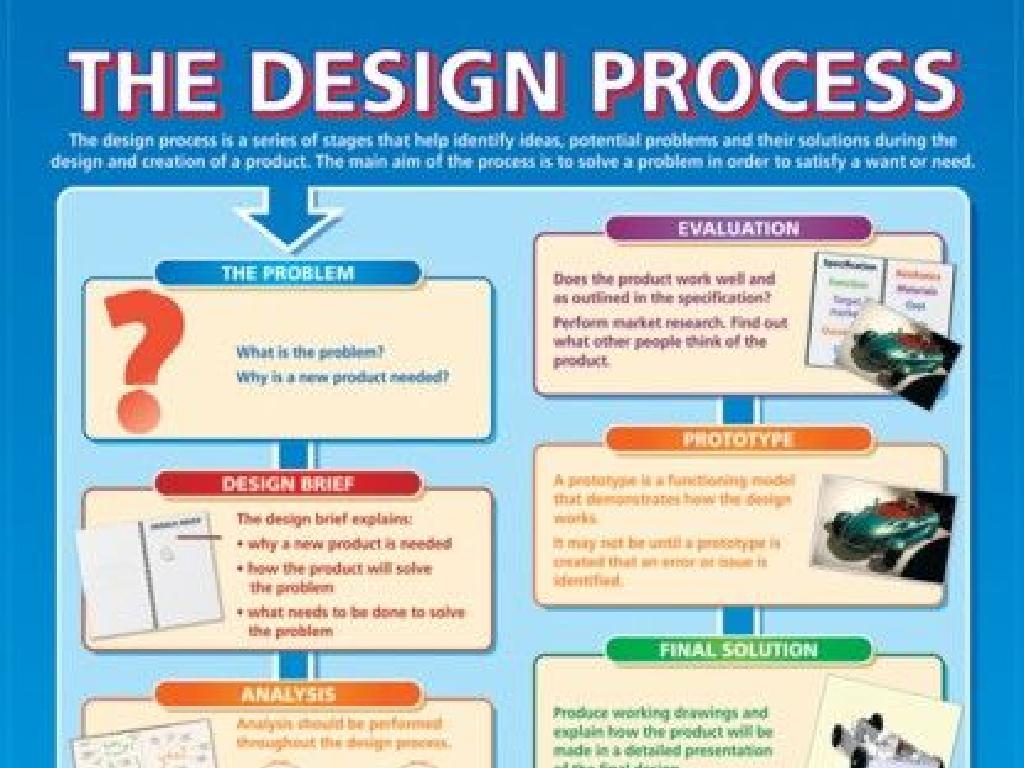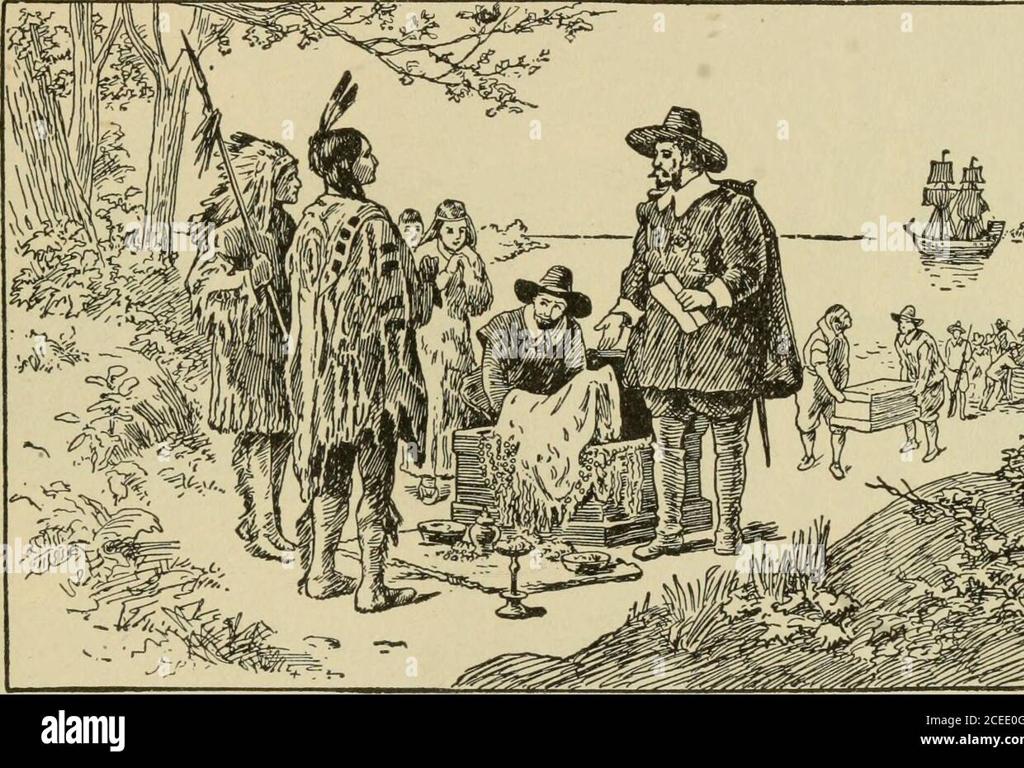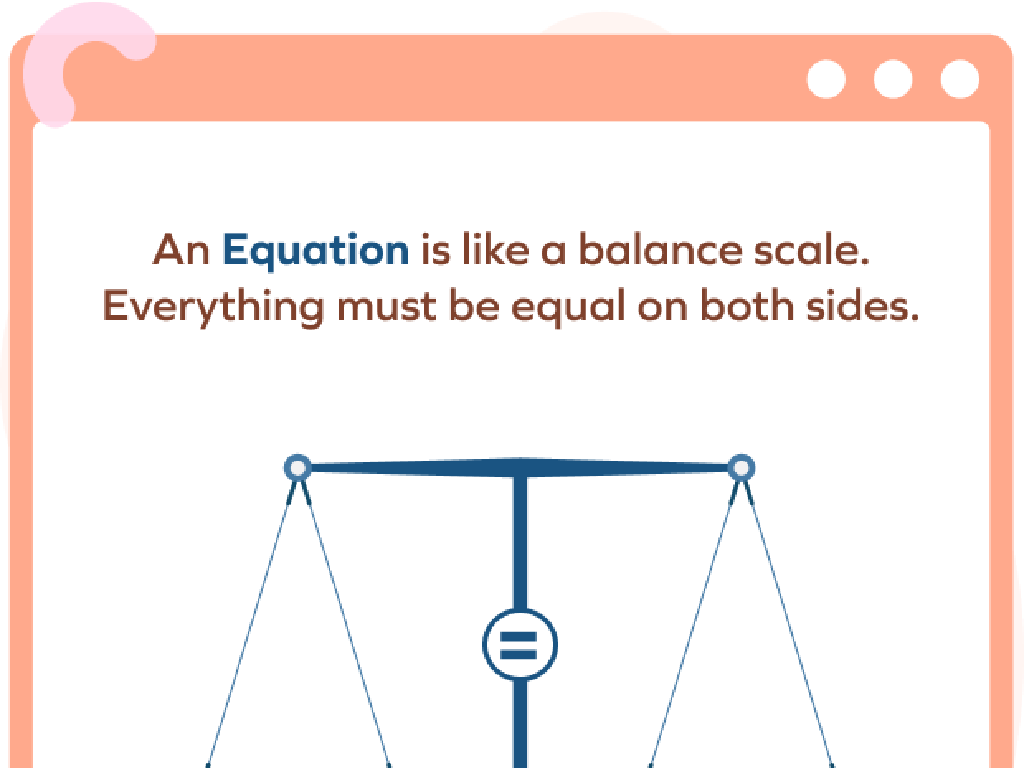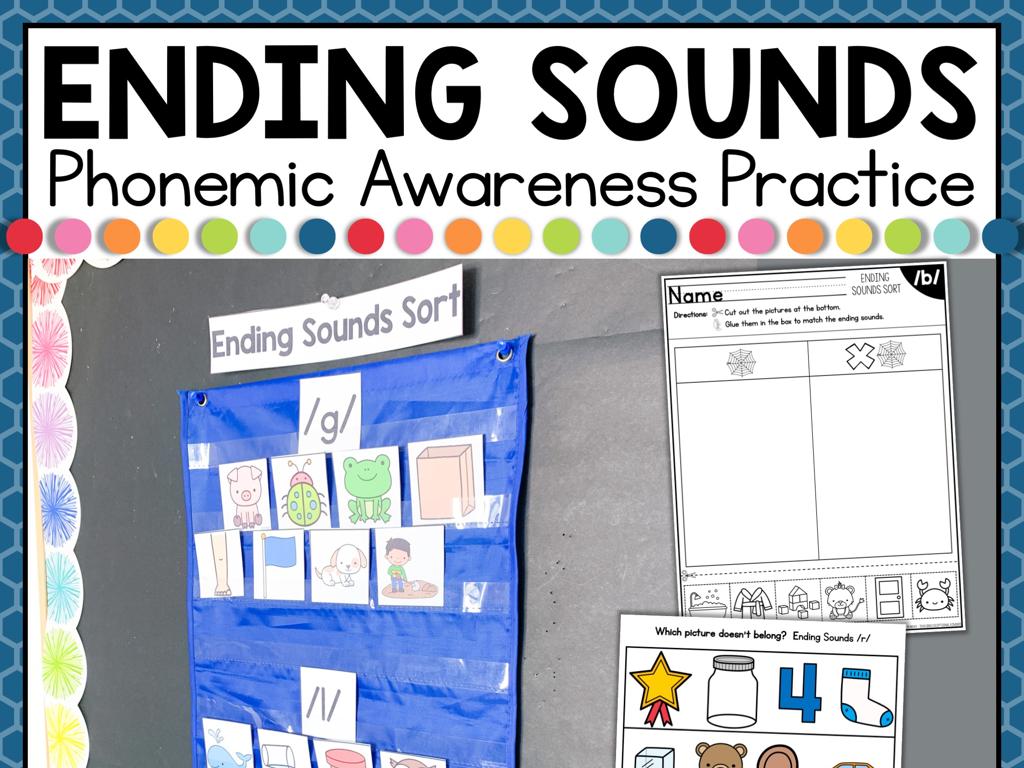Fewer, More, And Same
Subject: Math
Grade: Kindergarten
Topic: Comparing Up To 10
Please LOG IN to download the presentation. Access is available to registered users only.
View More Content
Comparing Numbers: Fewer, More, and Same
– Understanding ‘fewer’ and ‘more’
– ‘Fewer’ is when there are not as many; ‘more’ is when there are extra.
– ‘Same’ means equal numbers
– When two groups have the same number, we have the same amount.
– Counting practice
– We’ll count items to see which group has more or fewer.
– Fun activities to compare
– Use toys or snacks to learn these concepts through play.
|
This slide introduces the concept of comparing quantities to Kindergarten students. Start by explaining the terms ‘fewer’ and ‘more’ with simple examples, such as comparing two sets of blocks. Emphasize that ‘same’ means both groups have an equal count. Engage the students with hands-on counting activities using familiar objects to solidify their understanding. Incorporate interactive games or group activities where children can physically add to or take away from groups of items to see the difference between ‘fewer’, ‘more’, and ‘same’. This practical approach helps young learners grasp these foundational math concepts in a fun and memorable way.
Understanding ‘More’: Comparing Quantities
– ‘More’ means having extra items
– Counting to find ‘more’
– Let’s count objects in two groups together
– Comparing two groups
– Look at two sets, which has more?
– Group with more items
– The group with the larger count has ‘more’
|
This slide introduces the concept of ‘more’ to Kindergarten students by comparing quantities. Start by explaining that ‘more’ means having a greater number of items. Use visual aids with two groups of objects to count together with the class. Encourage the students to actively participate by counting aloud. After counting, ask the students to compare the two groups and identify which one has more items. Reinforce the concept by highlighting that the group with the larger number of items is the one with ‘more’. This interactive approach helps students grasp the concept of comparison by quantity.
Let’s Practice ‘More’!
– Observe apples and oranges
– Count each fruit group
– Use your fingers to count carefully
– Determine ‘more’ fruits
– Which pile is bigger? Apples or oranges?
– Discuss findings with class
|
This slide is designed to help Kindergarten students practice the concept of ‘more’ by comparing two groups of items. Display images of apples and oranges on the screen in different quantities. Guide the students to observe and count each group of fruits. Ask them to identify which group has a larger number, thereby understanding the concept of ‘more.’ Encourage them to use their fingers to count and to verbalize their thought process. After they have made their decision, facilitate a class discussion where students can share their findings and reasoning. This activity will help reinforce their counting skills and their ability to compare quantities.
Understanding ‘Fewer’ in Numbers
– ‘Fewer’ means not as many
– Count items in two groups
– Let’s count apples in two baskets
– Find which group has fewer
– Compare the counts to see difference
– Practice with examples
– Use toys or blocks to learn
|
This slide introduces the concept of ‘fewer’ to Kindergarten students, which is a foundational idea in understanding quantity comparison. Start by explaining that ‘fewer’ means a smaller number of items. Use tangible examples like counting apples in two different baskets to illustrate the concept. Encourage the students to actively participate by counting along and determining which group has fewer items. Provide various examples with common objects such as toys or blocks to reinforce the concept. The goal is to make the students comfortable with comparing quantities and using the term ‘fewer’ correctly in a sentence.
Let’s Practice ‘Fewer’!
– Observe toy cars and dolls
– Count each group’s toys
– Use your fingers to count carefully
– Decide which has fewer
– Fewer means a smaller number of toys
– Share your answer
|
This slide is designed to help Kindergarten students practice the concept of ‘fewer’ by comparing two groups of toys. Display images of toy cars and dolls on the screen, ensuring there is a clear difference in the number of toys in each group. Encourage the students to count the toys in each group, using their fingers if necessary, to determine which group has fewer toys. Reinforce the concept that ‘fewer’ means not as many. After they have counted, ask the students to share their answers and explain how they reached their conclusion. This activity will help them understand the concept of comparing quantities in a fun and interactive way.
Understanding ‘Same’ in Comparisons
– ‘Same’ means equal numbers
– Comparing equal amounts
– If two groups have 5 apples each, they are the same.
– Using ‘same’ in math
– ‘Same’ helps us see if two groups are equal.
– Examples of ‘same’
– 3 crayons and 3 cookies are both examples of ‘same’ because the count is equal.
|
This slide introduces the concept of ‘same’ to Kindergarten students as part of learning to compare quantities up to 10. Emphasize that ‘same’ means having an equal number of items in two groups. Use tangible examples like apples or crayons to illustrate this point. Encourage students to practice by comparing different sets of objects they encounter daily, ensuring they understand that ‘same’ is used when the number of items is equal. Activities can include matching games or counting exercises where students group items into sets with the same number.
Let’s Practice ‘Same’!
– Observe stars and hearts
– Find pairs with equal numbers
– Look for one group of stars and one group of hearts that have the same count
– Understand ‘same’ means not more, not fewer
– ‘Same’ is when two groups have an equal count, like 5 stars and 5 hearts
– Ready to show your matching pairs?
|
This slide is designed to help Kindergarten students practice the concept of ‘same’ by comparing groups of shapes. Present images of stars and hearts in various quantities up to 10 and ask the students to identify pairs with an equal number of shapes. Reinforce the concept that ‘same’ means neither more nor fewer items in the groups. Encourage students to explain their thought process as they match the pairs. This activity will help develop their counting and comparison skills. For the activity, prepare several examples of star and heart groups, and consider using manipulatives for a hands-on experience.
Class Activity: Counting Fun with Stickers!
– Find ‘more’, ‘fewer’, ‘same’ with a friend
– Compare sets of stickers
– Each pair gets different sticker sets
– Decide who has more or fewer
– Talk with your partner and count carefully
– Do any pairs have the same amount?
– Remember, ‘same’ means not more or fewer!
|
This interactive activity is designed to help Kindergarten students understand the concepts of ‘more’, ‘fewer’, and ‘same’ through a fun and engaging sticker comparison exercise. Provide each pair of students with a different number of stickers and instruct them to count and compare their sets. Encourage them to communicate and use the terms ‘more’, ‘fewer’, and ‘same’ as they determine the differences or similarities in quantity. This hands-on approach not only reinforces counting skills but also introduces basic comparative analysis in a way that is accessible to young learners. As a teacher, circulate the room to assist and guide discussions, ensuring that each student is actively participating and understanding the concepts. Prepare to celebrate correct answers and offer gentle corrections when needed.
Congratulations Comparing Experts!
– Celebrate learning ‘more’, ‘fewer’, ‘same’
– Comparing improves number understanding
– Applaud yourselves for your hard work
– A big clap for everyone!
– Keep practicing to be comparison pros!
|
This slide is meant to wrap up the lesson on comparing numbers up to 10. It’s important to reinforce the concepts of ‘more’, ‘fewer’, and ‘same’ as foundational skills in understanding numbers and quantities. Encourage the students by acknowledging their effort and progress in becoming ‘comparing experts’. This positive reinforcement helps build their confidence in their mathematical abilities. As a follow-up, suggest that they continue practicing at home with simple counting exercises, using toys or household items to compare quantities. This will help solidify their understanding and application of the concepts learned.






